Otakon 2013: The Panels
A late look at guests, heroines, and natural disasters
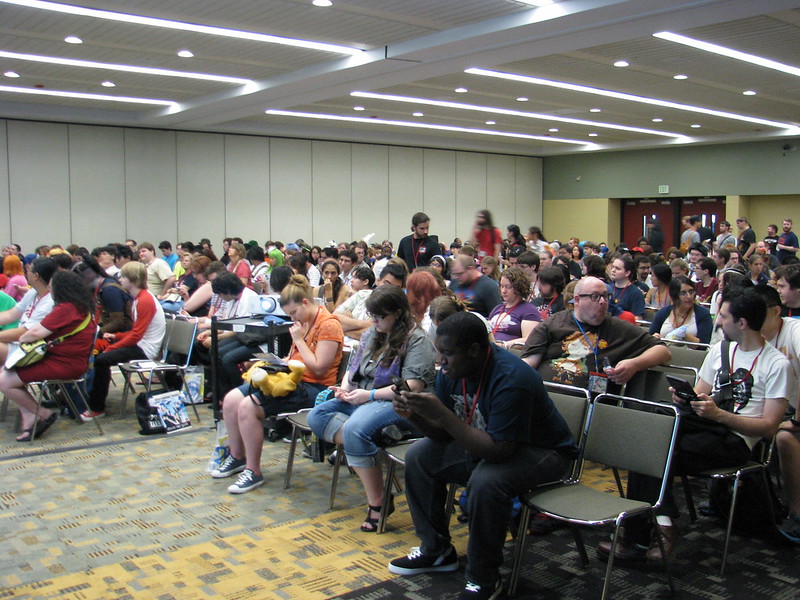 Hey, remember Otakon 2013? It was a convention we went to a month ago and, uh, I kind of didn’t get my panel reports written up until recently (for the record, Ink was perfectly on time). Anyway, I won’t bore you with apologies; Ink and I break down our opinions on a bunch of Otakon panels, including featured panels from great presenters like Charles Dunbar, Daryl Surat, and Mike Toole and some surprise hits from fans and guests, after the break!
Hey, remember Otakon 2013? It was a convention we went to a month ago and, uh, I kind of didn’t get my panel reports written up until recently (for the record, Ink was perfectly on time). Anyway, I won’t bore you with apologies; Ink and I break down our opinions on a bunch of Otakon panels, including featured panels from great presenters like Charles Dunbar, Daryl Surat, and Mike Toole and some surprise hits from fans and guests, after the break!
Japan 101: Lessons Learned (Fan)
Strangely enough, I found “Japan 101” when I popped my head into the panel room before heading to “Traveling to Japan.” Presenter Jesus Jackson seemed to be pretty charismatic and the other panel room was way across the convention center, so I decided to stick around for this version of the tried-and-true “So You Want to Visit Japan?” panel. Jackson went through all the basics, from transportation and attractions to cultural differences and the language. The crowd was excited to hear about Jackson’s personal stories from Japan, and he obliged with a lot of funny anecdotes and a generally laid-back demeanor. The best story involved his accidental adventure on the women-only car of a Tokyo subway, in which the female passengers all stared angrily at him until he got off the train! I’m going to Japan in about two weeks, so I’ve been doing a lot of research, and this panel didn’t add very much that I didn’t already know from travel books and months of Internet searches. Still, even without eye-opening information it’s still nice to get someone’s personal perspective on the quintessential otaku pilgrimage. –Evan
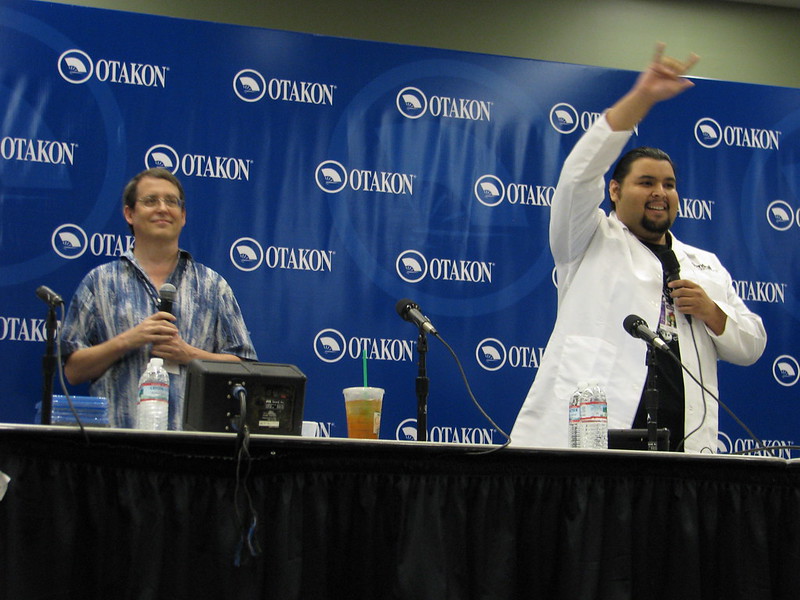
Sentai Filmworks (Industry)
Sentai Filmworks has had its share of problems since last Otakon, when they so proudly promoted the fact that they would be distributing Kids on the Slope on DVD and BD. Oddly enough, that high-profile title was to be the beginning of their undoing; BD defects and recalls irrevocably sullied the company’s reputation in the pre-order mentality of many consumers. There were also issues taken with Sentai’s translation of Mawaru Penguindrum. These were mostly recanted by the original accuser, but fans have since rallied behind the original outrage. This was seen during the Q&A, when one attendee brought up the point. David Williams squirmed on stage, saying that this was the first he’d heard of it, but I seem to recall the same issue being brought up at Sentai’s panel at Anime Expo. So in addition to touting a slate of semi-recent, horrible title acquisitions (Dog & Scissors, BTOOM, Little Busters, My Sister is Among Them, Pet Girl…, So I Can’t Play H) along with some decent ones, Sentai did the usual song and dance for a packed room and gave away some nice BDs and DVDs. Below are two questions I posed during the Q&A and David’s answers:
Q: What’s the deal with releasing OAVs separately (Kokoro Connect, High School of the Dead, Girls und Panzer) as opposed to including them with the released sets?
A: Contractual issues, mostly. Working with licensing committees can be a very difficult process.
Q: Is there any hope for getting extras like the ones included with The Garden of Words, interviews with the creatives (Japanese directors, animators, etc.), on other shows?
A: Extras like those depend on what’s available from the Japanese studios. We try to put everything available on what we release.
–Ink
We Con, Therefore We Are: Fandom, Convergence and a Critical Look at the Modern Otaku (Featured)
I can confidently say this was the best Otakon panel not featuring me, since it featured panelist Charles Dunbar quoting one of my articles to a giant room full of eager con attendees. In all seriousness, though, Charles rarely disappoints, and this panel discussion was no exception. Charles tackled all sorts of convention culture topics (convergence culture, secondary fandoms, creation vs. consumption) with co-panelists Daryl Surat and Doug Wilder, and as always his animated speaking style and copious visual aids kept the audience engaged with what otherwise might be a dry sociology discussion. What really gave this panel life, though, was the interplay between Charles and Daryl. Charles is in love with fan conventions, and as a result his opinions can get a little hyperbolic (a line like “I am coming to the con to find myself” is something only Charles could say with a straight face). Meanwhile, Daryl is a tad dogmatic, often insisting that certain brands of geekdom be placed in certain boxes and labeled with certain words. That’s on the extremes, though. When the two come together, they strongly disagree but meet on some points, creating a fascinating discussion about why fans go to conventions, what they get out of the experience, and how their geekdom affects the organization and even the marketing of the events they attend. I find that they’re both right on some things and wrong on others, so I can think of no better way to reach an appropriate middle ground than hearing these two smart and opinionated anime con icons bounce ideas off each other. –Evan
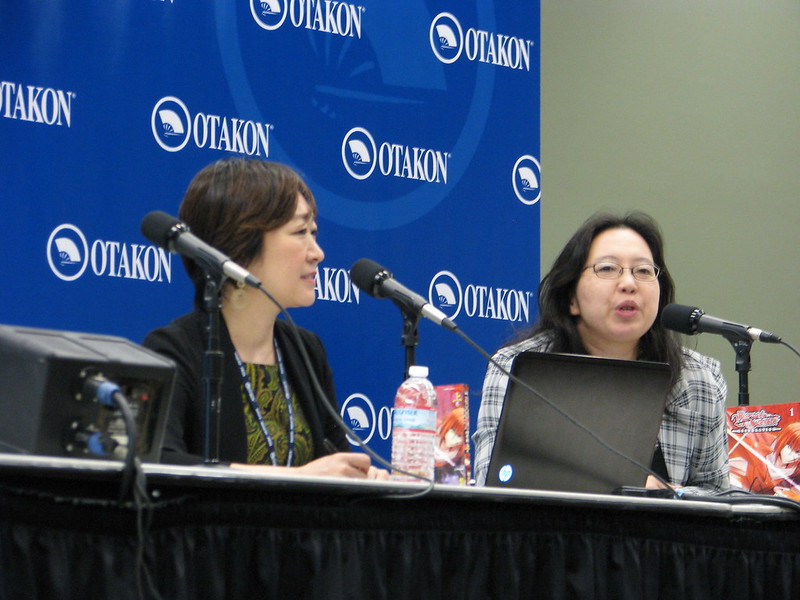
Real Life of a Manga-ka: Rurouni Kenshin (Guest)
Stunned. I was completely stunned by this panel and for a number of reasons. The room was PACKED. People had to be turned away due to capacity issues … on a Friday morning … for a Japanese guest. This (unfortunately) almost never happens. To top off my disbelief, the featured guest wasn’t exactly high-profile; she’s an editor for a famous manga artist (and also his wife). The manga artist was Nobuhiro Watsuki, of Rurouni Kenshin fame, and his wife, Kaoru Kurosaki, ran the audience through a typical day in his life as an artist. There was an apologetic note from Watsuki himself about not being able to appear, after which flowed testimonials about him from contemporaries and coworkers, diagrams and calendars detailing his work schedule, pictures of his home and workspace, and a detailed description of his technical process as well as his rationale for using specific tools. All in all, it was an impressively informative panel with a lot of heart and humor. I enjoyed the anime but have never read the Rurouni Kenshin manga and yet this panel was all kinds of interesting. It was also the platform for announcing that there was a world premiere exhibit of Watsuki’s work in the Artist Alley. The manga artist graciously allowed pictures of everything in that exhibit, and I’d love to link you to my pictures, but everyone had to swear not to upload them. When asked, “Why choose Otakon for the premiere?” Kuroaski replied, “When talking with Otakon, things just flowed in that direction naturally. Perhaps it was destiny.” –Ink
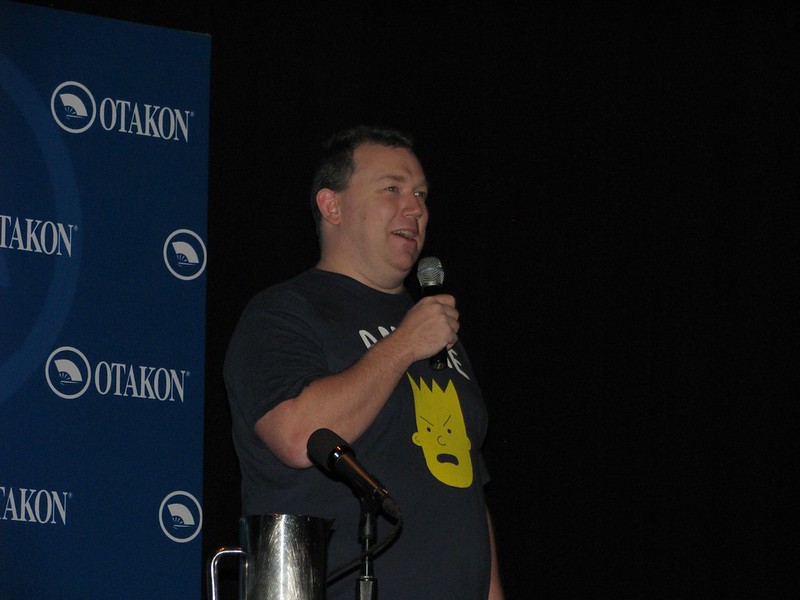
Outsider Anime (Featured)
It just wouldn’t be a Mike Toole panel without some kind of unique bent on expectations as based on the title. Like so many panels that explore animation that has either influenced or been influenced by anime, this clip show featured examples of animation that shed the common aesthetic which anime fans associate with the medium today in favor of a more experimental or non-conventional approach. The ironic twist? Toole defined “outsider” art as the products of those in Japan who push boundaries within the medium of anime, and the examples were breathtaking. Some of the pieces, like La Maison en Petites Cubes, looked like they came straight from Europe or the USA, while others experimented with pure, plotless story telling and abstract expression. In addition to just showing examples, Toole took the audience through the directors’ career paths to illustrate how the creators as well as the animations they produced were outside convention. A clip show is all well and good, but Toole’s research, progression, and associations made this panel consistently informative and entertaining. Wanna fill out your MAL? Just watch and then add these few examples of the short pieces cited in the panel to your history and maybe your favorites: Jumping, Noiseman Sound Insect, Cencoroll, Diary of Tortov Roddle, Cat Soup. –Ink

A Study of Heroines: Compassion and Courage in Revolutionary Girl Utena and Madoka Magica (Fan)
Packed halls and rearranged rooms made me 2X late to this panel, which also started and ended early. Because I came into such an exploratory/analytical panel midway, I’m sad to say I’ll not be able to speak on how well any overarching themes were applied. What I can say, however is that panelist Katriel Paige dissected specific characters from Revolutionary Girl Utena and Madoka Magica in order to examine how their traits uniquely exemplified those associated with the archetypal hero. If exposing what exactly made each figure a heroine was the intent, this panel was a great success. During the panel proper, Katriel was very animated while delivering insight into several types of conflict as well as examining sacrifice, gender roles, and more — all aptly illustrated by key images and concise notes in the on-screen presentation. Extended pauses at the end of main points felt awkward though, like she was either searching for her next line or waiting for audience reaction, which broke the energy and delivery’s flow and sometimes made transitions between points seem like jumps in logic or body paragraphs without bridges (though that could just speak to my attention span). This feel was completely opposite her demeanor during the Q&A, however, where her thorough knowledge of the subject and quick thinking were seamlessly applied on-the-fly to thoroughly satisfy each inquisitor who raised a hand. –Ink

Masao Maruyama Q&A #1 (Guest)
This was the first time I’ve ever pinky sworn. About what, I cannot tell, because I pinky swore. I’m used to being one of maybe 10 people in the room for a Maruyama Q&A, but this year a good third of the seats were occupied! Attendees were treated to a short but incredibly touching piece of animation and another something special. Afterwards, questions were asked about future MAPPA projects, Maruyama’s feelings on being the head of an up-and-coming studio after leaving Madhouse, his memories of working with the late Satoshi Kon and Osamu Dezaki, and … Kickstarter. Let me expound upon that last one a bit. I’m sad to say that, as rock-and-roll as Maruyama is, there’s something fundamentally wrong with either how Kickstarter translates into Japanese or his grasp of the concept. Maruyama will continually joke, “If you want to give me your money, please!” Citing the immense costs of anime production, Maruyama comes off as seeing Kickstarter as an impossible means of funding anime. I do not think he even knows about the success of Kick-Heart or the astounding money raising achievements regarding Time of Eve and Little Witch Academia 2. To paraphrase Maruyama, “It might work for established works/artists, but what about those who are unknown or relatively unknown?” Sadly, it looks as though we just have to hope MAPPA gets enough dough to finish Kon’s The Dreaming Machine on its own. –Ink
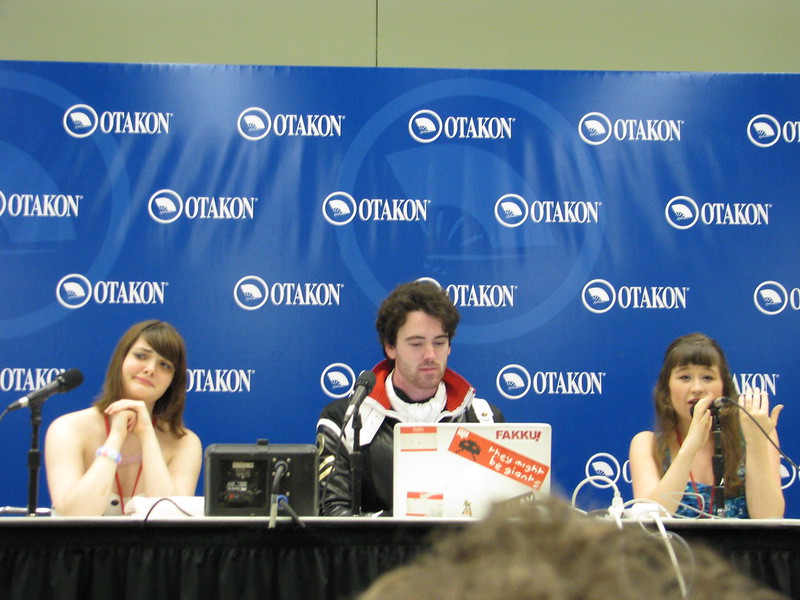
Do Re Anime (Fan)
A panel that takes “a deeper look into what is so great about using music as a main plot point” sounded like a grand idea! What followed, however, was a slow descent into tedium. To their credit, panelists Nicole, Dylan, and Amanda started off with a decent variety of shows and were very fluid and enthusiastic about explaining which musical genre each featured as well as the type of story each told: coming of age, idol worship, etc. Exploring what was so great about featuring music as a plot point was largely and rather sadly ignored, and the bulk of this panel focused on idol series. This would have been expected had I read the description in the guidebook, but even that was betrayed in the end. Idol shows were introduced the same way the other examples were, so the promise of examining how the popularity of idols has influenced anime was simply not there — unless you count relentlessly relaying myriad examples of shows with that focus to the growing number of idol fans. This would be a fine mention but definitely doesn’t require so much of a focus. Of course any panel picking and choosing shows to exemplify a theme will draw ire by leaving out something from everyone’s personal list of favorites, but to exclude the likes of Beck, DMC, Sound of the Sky, and Nodame Cantabile seems a criminal under-representation in plot variety. A little restructuring, putting all non-idol shows in the first half and then exploring all the idol shows in the second, might work a little better. The panelists’ hearts were in the right place, but a little more work into what they intended to say is needed. –Ink
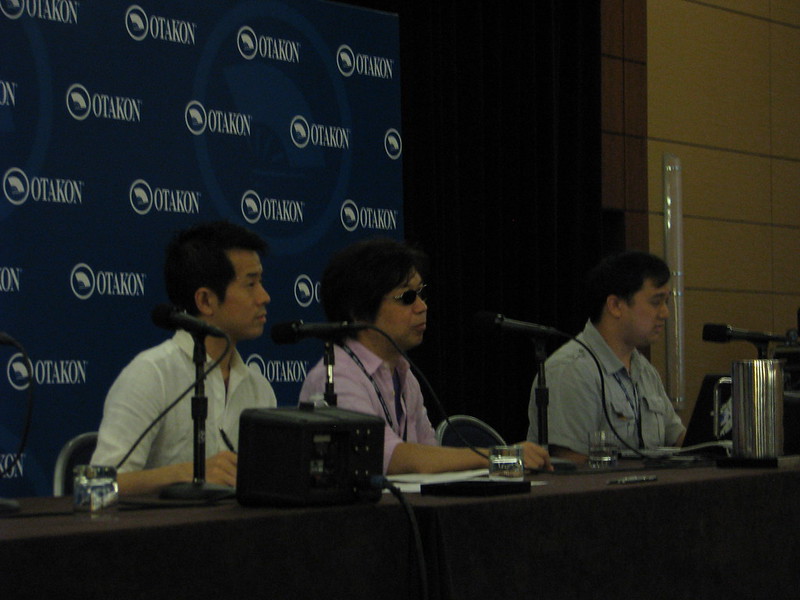
Shinichiro Watanabe Q&A #1 (Space Dandy premiere) (Guest)
If the title were accurate, it would’ve read: Shinichiro Watanabe Career Summary and Space Dandy Announcement. But where’s the surprise in that? There was actually very little Q&A in this panel, but the rundown of Watanabe’s career was a funny affair. He began with Macross Plus and ran through the genesis of Cowboy Bebop. After a while, Watanabe started describing his projects in single phrases, such as “war with Hollywood” concerning his contributions to The Animatrix (Kid’s Story, A Detective Story) , and thereafter went into explaining his visible absence from the industry in the five years between Genius Party and Kids on the Slope. Watanabe had evidently been pining for a chance to do a coming of age story for a while, but was never given the chance due to his success with Cowboy Bebop. Among those asked afterwards, the question which brought up the most interesting answer concerned how Watanabe met composer Yoko Kanno. In short, despite her off-putting, shy demeanor, the anything-but-shy music she created blew him away. After a few questions had been asked, Watanabe revealed Space Dandy, the director’s first venture into comedy, which stars a protagonist “with zero concerns.” It’s meant to be the polar opposite of Cowboy Bebop, with “80% humor and 20% seriousness.” –Ink
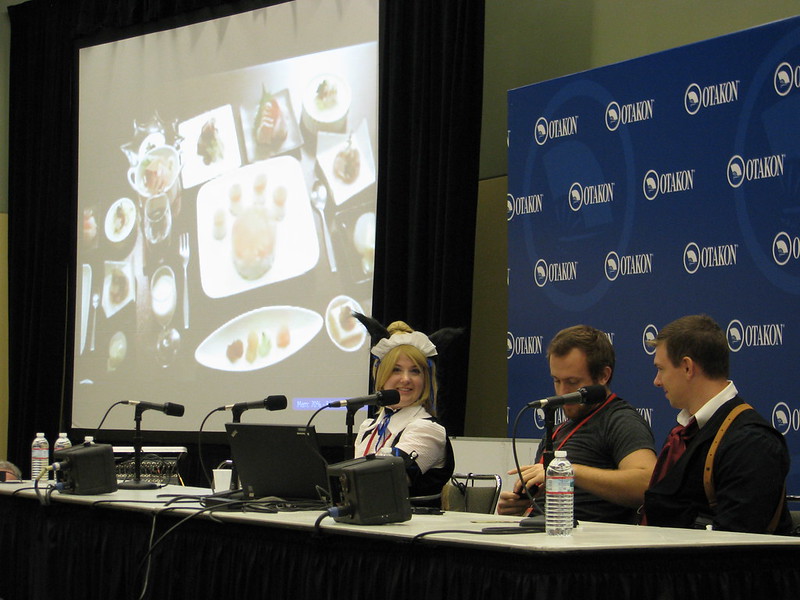
Nyan, Nyan, NYAN! Cats in Japanese Culture and Anime (Fan)
For what I thought was going to be a light, throw-away panel, I sure took a lot of notes! My notepad hasn’t seen this type of fury since I last attended a Charles Dunbar panel. Presented by religious anthropologist Akuja, I really have nothing but praise for the presentation, the construction, and the content. After a brief biological history that culminated with how cats were introduced to Japan via Buddhism, Akuja explored why cats were seen as important to religion and how that, in turn, expanded to folktales and stories (The Boy Who Drew Cats TS 8:30). Examples of cats in specific roles as defined by what type of stories they came from were backed up with plenty of contemporary examples from anime, manga, and film. Beyond media, Akuja looked at maneki neko (beckoning cat) — from whence it came and how it’s changing — as well as other culturally prominent feline figures (Hello Kitty) and actual cats: what traits they’re given and how they’re regarded by society in Japan. This broke off into fashion trends (nekomimi), lifestyles (cat cafes), economic significance, and even gender/behavioral association. So much detail was provided in this panel! It was masterfully crafted and astoundingly streamlined. Never before have I entered a panel for yuks and end up leaving with a head full of new and treasured information. A must-see should it come to a con near you! –Ink
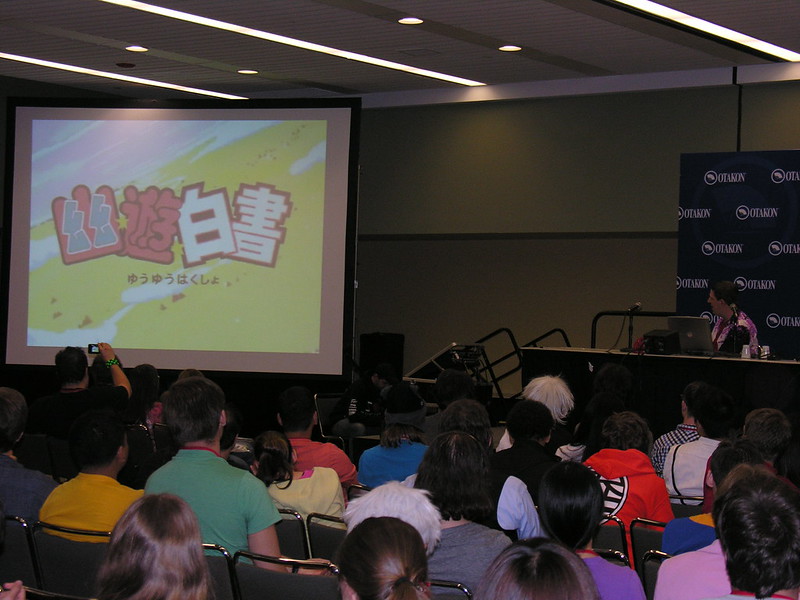
45 Years of Shonen Jump: A Visual History (Fan)
I had previously caught a panel about Saint Seiya author Masami Kurumada from The Land of Obscusion’s George Horvath at AnimeNEXT, and I made a point to check out this panel — an overview of the anime adaptations of manga from Japanese boys comic magazine Weekly Shonen Jump. Horvath covered a wide swath of titles, starting with obscure stuff like the yakuza-themed Otoko Ippiki Gaki Daisho or “The Ideal Man Boy’s Gang Leader” (the first Jump anime adaptation) and Dokonjo Gaeru, more commonly known as “Gutsy Frog,” about a boy with a frog on his shirt that comes to life. Naturally, he touched on Kurumada’s Ring ni Kakero and Saint Seiya along the way (a panel from George without Kurumada is about as complete as a panel from me without Satoshi Kon), as well as other big hitters like Captain Tsubasa, Fist of the North Star, JoJo’s Bizarre Adventure, Rurouni Kenshin, Dragon Ball, and so on. As an overview of the history of the magazine, the clipshow was the perfect way to jam it all in, and Horvath’s passion for the material made it a fun ride. Unfortunately he used too many opening animations and not enough clips from the shows themselves, and it didn’t help that he was following the manga release timeline but using anime OPs from all different time periods, resulting in jarring switches in animation styles. But the greatest tragedy of all is that time restrictions prevented George from showing a clip from Toriko, Shonen Jump’s new(ish) gastronomic adventure that you should totally go watch right now. –Evan

Kanpai! A Guide to Japanese Alcohol (Fan)
Presented by Master Sake Sommelier Tiffany Dawn Soto with the help of video editor and self-proclaimed Japanophile Rob Perry, this panel is a godsend to those curious about procuring the various libations available from Japan. Soto’s title was not just for show, just read this bio! Starting off with a historical walkthrough on sake production, consumption, and misconceptions, the panel spared no detail in explaining the different types available. The most enlightening thing to me was learning how the different combination of water sources and rice grains affects the aromatics. After sake, it was time for shochu. Soto took the audience through a small bit of history and went deeper into distillation and serving information. The panel also covered beer, including the rise of craft beer, and even whiskey! But this panel wasn’t all straight alcohol. This was a complete package! The audience was treated to explanations of “Bartender Artistry,” which is not to be confused with mixology. We’re talking glass icecube sculpting fer cryin’ out loud. Of course, the mixing of cocktails was also touched upon, as were drinking culture in Japan (nomikai, konpa, and uchiage) and how Japan handles public drunkenness. Not only did Soto point out a website from which to order good sake, but she also invited the whole panel out to drink afterwards at her restaurant, where she made all the sake affordable to try just for that night. Kanpai! –Ink
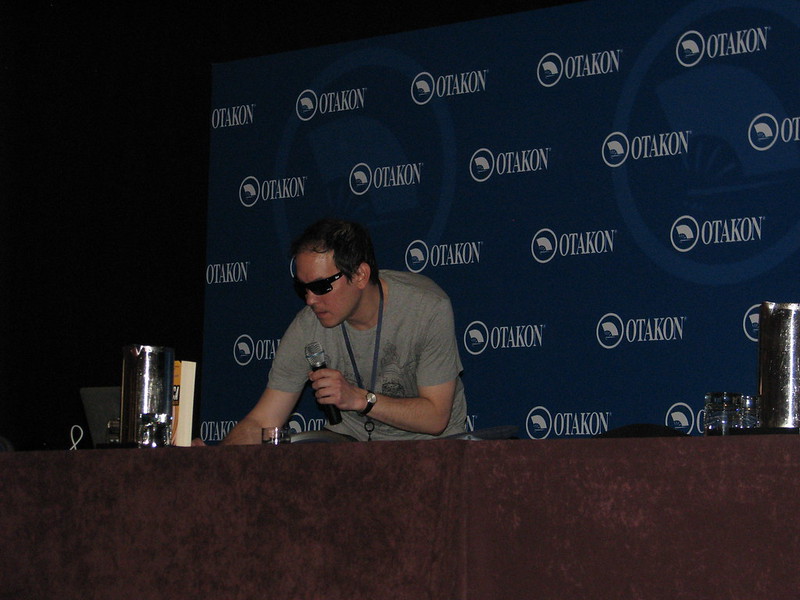
Anime After the Quake (Guest)
When I walked in, Roland Kelts was rolling Osamu Tezuka’s “Jumping,” which I had oddly enough seen a portion of earlier during Outsider Anime. He played the entire six-minute short as an example of anime influenced by the post-apocalyptic reality of WWII (which the creator lived through). Afterwards, Kelts asked the audience questions to explore the themes therein. Then he showed the Starz documentary Anime: Drawing a Revolution to compound the notion of how creativity can arise out of tragedy while introducing the theme of identity crisis via syncretism. Both of these clips and the Q&A took up 95% of the panel. That is to say Kelts took a long, roundabout route to implying the parallel between post-war Japan and post-quake Japan. While establishing a solid intra-cultural comparison, the panel was still not speaking to its own title: ANIME After the Quake. Sadly, it never would. The most Kelts said on the intended subject was that “the quake opened another cultural identity crisis in Japan, resulting in anime where schisms are very much the focus” (paraphrased). Were there clips? No. Slides? No. Any examples at all? I think you know the answer. What he did was to continue hypothesizing about cultural implications, specifically the recent approval of government funds for the anime industry ($50 million for “Cool Japan”) and what that could mean for future anime: whether government funding meant an end to the freedom the medium has held thus far due to sponsor-based censorship or if it would inspire creativity by raising pay scale. If trimmed, I think this panel would be an excellent one IF the time saved was filled with examples that clearly demonstrate aspects illuminated by the parallel presented earlier. –Ink
Click here for more coverage of Otakon 2013.
